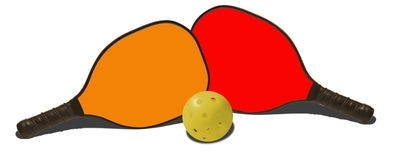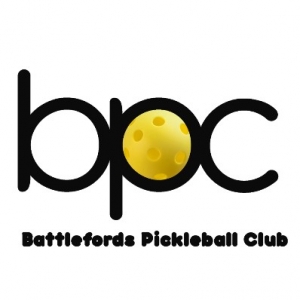TERMINOLOGY

Terminology
Below are definitions of frequently used terms in pickleball.
- Ace: A serve that is not returned by the opponent.
- Approach Shot: A shot hit forehand or backhand while running up to the net.
- Baseline: The line at the back of the pickleball court.
- Bounce It: A directive from your partner to let the ball bounce – because your partner thinks it will land out of bounds.
- Carry: Hitting the ball in such a way that it is carried along on the face of the paddle during its forward motion.
- Centerline: The line bisecting the service courts that extends from the non-volley zone line to the baseline.
- Crosscourt: The opponent’s court diagonally opposite yours.
- Dead Ball: The ball is ruled to be dead when a fault is declared.
- Dink: A soft, low shot, initiated from within or just behind the non-volley zone, that lands in the opponent’s non-volley zone.
- Double Bounce Rule: After a serve, each team must play their first shot off the bounce, after which the ball can be played off the bounce or volleyed.
- Down The Line: A shot hit near a sideline that travels close and parallel to the same line.
- Drop Shot: Soft shot, usually initiated from mid to backcourt, that arcs just over the net and lands within the opponent’s non-volley zone.
- Fault: An infringement of the rules that ends the rally.
- Follow Through: A continuation of the motion of your swing that follows the direction you wish the ball to travel.
- Foot Fault: Failure to keep at least one foot behind the baseline and touching the ground at the moment the paddle contacts the ball during a serve, or stepping on or into the non-volley zone while volleying a ball.
- Ground Stroke: A stroke made after the ball has bounced.
- Half-Volley: A type of hit where the player hits the ball immediately after it has bounced in an almost scoop-like fashion.
- Kitchen: An affectionate name commonly used for the non-volley zone.
- Let Serve: A serve that touches the top of the net and lands in the proper service court. It is replayed without penalty.
- Lob Shot: A shot that sends the ball high overhead and deep, forcing the opponent back to the baseline.
- No man’s land: The area in the middle of the court 4-5 feet away from the kitchen line. Typically you don’t want to be standing here because balls can easily be hit to your feet
- Non-Volley Zone: A seven foot area adjacent to the net within which you may not volley the ball. The non-volley zone usually includes all lines around it.
- Overhead Shot: A shot made with the paddle over head height. Often synonymous with a smash or a slam, although it can refer to any shot made at that height, whether hard or soft.
- Passing Shot: A shot that passes beyond the reach of the player and lands in bounds. Typically played against an opponent who is advancing on the non-volley zone or who is already there.
- Poach: Used in doubles play, to cross over into your partner’s area to play a ball.
- Rally: Hitting the ball back and forth between opponents.
- Serve / Service: An underhand lob or drive stroke used to put the ball into play at the beginning of a point.
- Serve Number: Used in doubles play, either “1” or “2” depending on whether you are the first or second server for your side. This number is appended to the score when it is called.
- Sideline: The line at the side of the court.
- Side out: Declared after one side loses its serve and service is awarded to the other team.
- Slice: Another name of backspin
- Smash or Slam: A hard, overhead shot.
- Spin: Spin applied to the ball causing it to rotate and land in a position other than expected. Top spin is applied to the ball by stroking it from low to high, causing it to rotate in the direction of its flight. Drop spin is cutting under the ball to have it drop as it clears the net. Back spin is imparted to the ball by stroking it from high to low, causing it to spin in the direction opposite to its flight.
- Split Step: This is a technique used in most racket sports where your feet are parallel with each other and are wider than shoulder-width apart. You could call this the ‘ready’ position. It’s used to be as neutral as possible in order to return backhand and forehand shots easily.
- Technical Foul: The referee may add one point to a player’s score or a team’s score when, in the referees judgment, the opponent is being deliberately abusive.
- Third Shot Drop: a relatively high shot that lands in the kitchen so that your opponent can’t smash or drive the ball. Usually used to allow your team to approach the net safely so that you can begin dinking.
- Volley: To hit the ball before it bounces.

